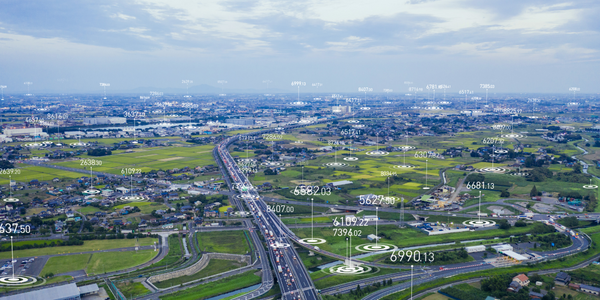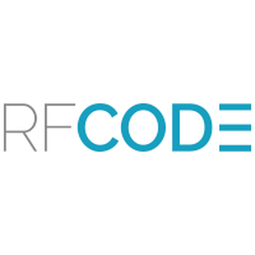下载PDF
Real-time Environmental Monitoring Solution for DataVita

技术
- 网络与连接 - 射频收发器
- 传感器 - 射频仪表
适用行业
- 建筑物
- 可再生能源
适用功能
- 设施管理
- 产品研发
用例
- 泄漏与洪水监测
- 室外环境监测
服务
- 系统集成
挑战
在调试他们的 4,000 平方米。 DataVita 确定,为了确保高效运营并支持客户,他们需要经济高效的机架级温度和湿度监控。他们与客户签订的服务水平协议 (SLA) 保证 100% 的正常运行时间 – 如果可用性下降一秒钟,DataVita 将返还客户季度费用的 25%。该公司寻求经验丰富的合作伙伴来设计和部署机架级监控解决方案,以保护他们的客户和收入。
客户
数据维他
关于客户
DataVita 的目标是通过提供由世界级 Fortis 数据中心提供的创新、灵活的服务,成为苏格兰数字经济的核心。 Fortis 数据中心于 2016 年开业,是苏格兰最大、最先进的专用托管设施。它也是英国第一家在设计和施工方面均获得 Tier III 认证的设施。该站点由 DataVita 运营,拥有多达 2,000 个机架,全部由 100% 可再生能源供电。凭借 1.18 的 PUE,该中心可以为选择从低效的内部机房迁移到灵活的托管解决方案的主要组织显着节省成本。
解决方案
RF Code 在参与该项目的所有实时数据大厅的所有 200 个机架中部署了 300 个传感器。这些传感器监测温度、湿度、热通道、回流、管道和冷却系统。然后,该团队将 RF Code 的实时数据采集与数据大厅冷却控制与楼宇管理系统并行完全集成。最初的计划是监测所有交付点 (POD) 条件下的温度和湿度。范围扩大到包括:
- 部署整体环境监控和警报 • 加强物理安全和监控,包括通过视频监控对未经授权的机架访问发出警报
- 集成 RF Code 作为间接绝热冷却解决方案的主要实时控制系统,并将冷却系统控制传感器指定为备用
- 通过事件创建、升级和分析实施基于仪表板的服务台监控和警报
通过此次安装,DataVita 能够从简单地监控楼宇管理系统控制器转变为利用 RF Code 的实时传感器数据来动态控制冷却系统。
运营影响
数量效益
相关案例.

Case Study
Remote Monitoring & Predictive Maintenance App for a Solar Energy System
The maintenance & tracking of various modules was an overhead for the customer due to the huge labor costs involved. Being an advanced solar solutions provider, they wanted to ensure early detection of issues and provide the best-in-class customer experience. Hence they wanted to automate the whole process.

Case Study
Vestas: Turning Climate into Capital with Big Data
Making wind a reliable source of energy depends greatly on the placement of the wind turbines used to produce electricity. Turbulence is a significant factor as it strains turbine components, making them more likely to fail. Vestas wanted to pinpoint the optimal location for wind turbines to maximize power generation and reduce energy costs.

Case Study
Siemens Wind Power
Wind provides clean, renewable energy. The core concept is simple: wind turbines spin blades to generate power. However, today's systems are anything but simple. Modern wind turbines have blades that sweep a 120 meter circle, cost more than 1 million dollars and generate multiple megawatts of power. Each turbine may include up to 1,000 sensors and actuators – integrating strain gages, bearing monitors and power conditioning technology. The turbine can control blade speed and power generation by altering the blade pitch and power extraction. Controlling the turbine is a sophisticated job requiring many cooperating processors closing high-speed loops and implementing intelligent monitoring and optimization algorithms. But the real challenge is integrating these turbines so that they work together. A wind farm may include hundreds of turbines. They are often installed in difficult-to-access locations at sea. The farm must implement a fundamentally and truly distributed control system. Like all power systems, the goal of the farm is to match generation to load. A farm with hundreds of turbines must optimize that load by balancing the loading and generation across a wide geography. Wind, of course, is dynamic. Almost every picture of a wind farm shows a calm sea and a setting sun. But things get challenging when a storm goes through the wind farm. In a storm, the control system must decide how to take energy out of gusts to generate constant power. It must intelligently balance load across many turbines. And a critical consideration is the loading and potential damage to a half-billion-dollar installed asset. This is no environment for a slow or undependable control system. Reliability and performance are crucial.

Case Study
Energy Saving & Power Monitoring System
Recently a university in Taiwan was experiencing dramatic power usage increases due to its growing number of campus buildings and students. Aiming to analyze their power consumption and increase their power efficiency across 52 buildings, the university wanted to build a power management system utilizing web-based hardware and software. With these goals in mind, they contacted Advantech to help them develop their system and provide them with the means to save energy in the years to come.

Case Study
Remote Monitoring and Control for a Windmill Generator
As concerns over global warming continue to grow, green technologies are becoming increasingly popular. Wind turbine companies provide an excellent alternative to burning fossil fuels by harnessing kinetic energy from the wind and converting it into electricity. A typical wind farm may include over 80 wind turbines so efficient and reliable networks to manage and control these installations are imperative. Each wind turbine includes a generator and a variety of serial components such as a water cooler, high voltage transformer, ultrasonic wind sensors, yaw gear, blade bearing, pitch cylinder, and hub controller. All of these components are controlled by a PLC and communicate with the ground host. Due to the total integration of these devices into an Ethernet network, one of our customers in the wind turbine industry needed a serial-to-Ethernet solution that can operate reliably for years without interruption.

Case Study
Temperature monitoring for vaccine fridges
Dulas wanted a way to improve the reliability of the cold chain, facilitating maintenance and ensuring fewer vaccines are spoiled. Dulas wanted an M2M solution which would enable them to record and report the temperature inside vaccine refrigerators.





